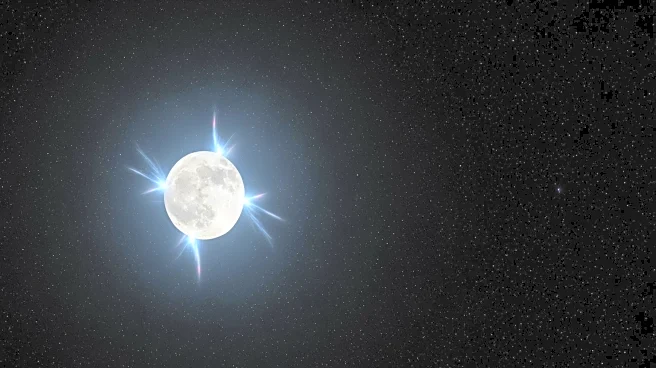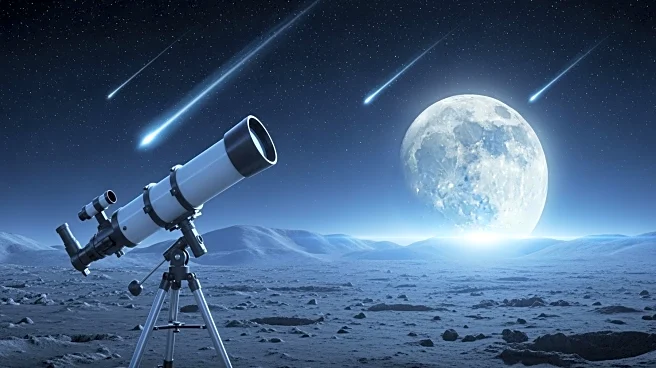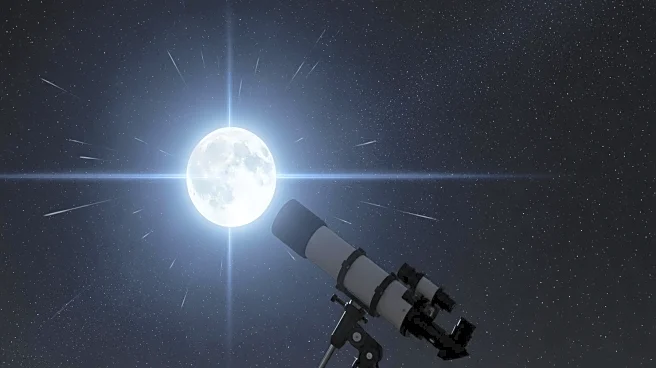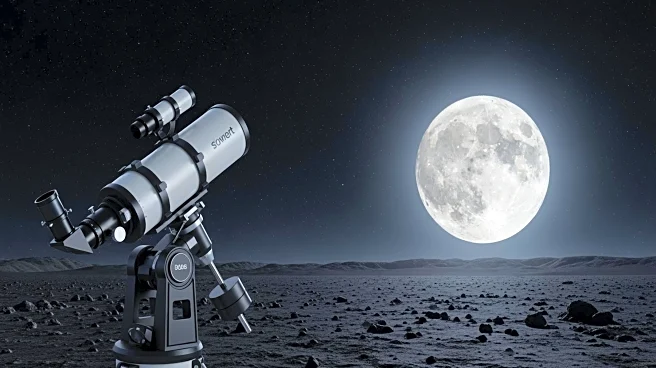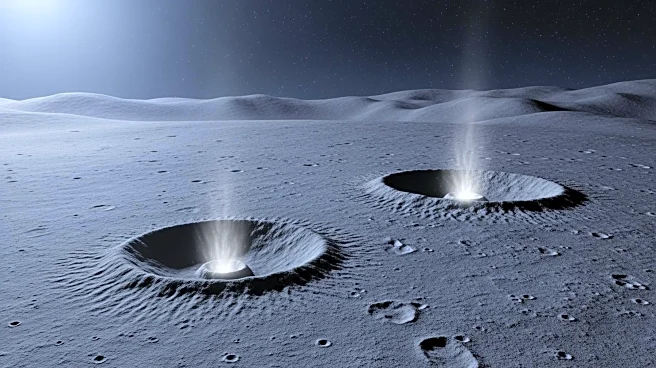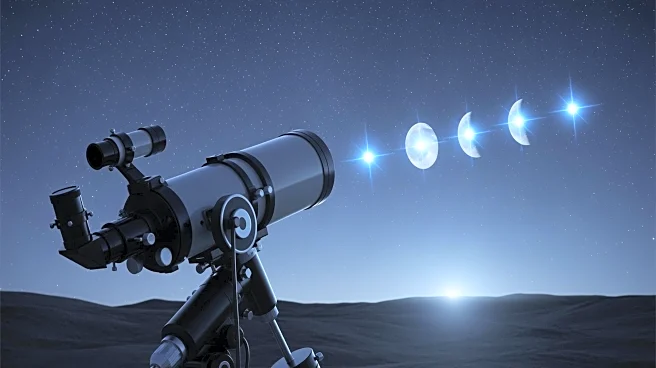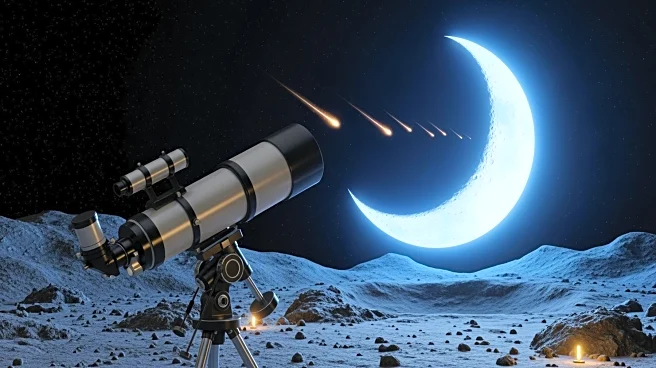What's Happening?
Astronomer Daichi Fujii from Japan's Hiratsuka City Museum has observed two mysterious flashes on the Moon's surface, sparking scientific debate about unusual lunar activity. The first flash was recorded
on October 30, showing a large, round spot briefly lighting up the Moon before fading. A second flash was observed two days later near the Moon's horizon. The leading theory suggests these flashes were caused by space rocks impacting the Moon, linked to the Taurid meteor shower, which occurs annually in late October and early November. This meteor shower is a result of Earth passing through debris left by Comet Encke. Due to the Moon's lack of atmosphere, meteors are not visible until they strike its surface, creating a brief fiery flash and a crater. Fujii, who has been observing lunar impacts since 2011, noted that the first flash occurred east of the Gassendi Crater, with the meteoroid traveling at approximately 60,000 mph and weighing around 200 grams.
Why It's Important?
The observation of these lunar flashes is significant as it provides insights into the frequency and impact of meteoroid collisions on the Moon. Understanding these impacts is crucial for future lunar exploration and potential colonization, as it helps assess the risks posed by space debris. The findings also contribute to the broader study of meteor showers and their effects on celestial bodies. For scientists, these observations offer a rare opportunity to study the dynamics of meteoroid impacts in real-time, enhancing our understanding of the Moon's geological history and surface conditions. The data collected by Fujii could inform the design of future lunar missions, ensuring better protection against potential impacts.
What's Next?
Further analysis of the data collected by Fujii and other astronomers could lead to a deeper understanding of the Moon's interaction with meteoroids. Scientists may conduct additional observations during future meteor showers to gather more data on the frequency and intensity of such impacts. This research could also influence the planning of future lunar missions, particularly those involving human presence, by providing critical information on the potential hazards posed by meteoroid impacts. Additionally, the scientific community may explore the possibility of deploying more advanced observation equipment on the Moon to continuously monitor and study these phenomena.
